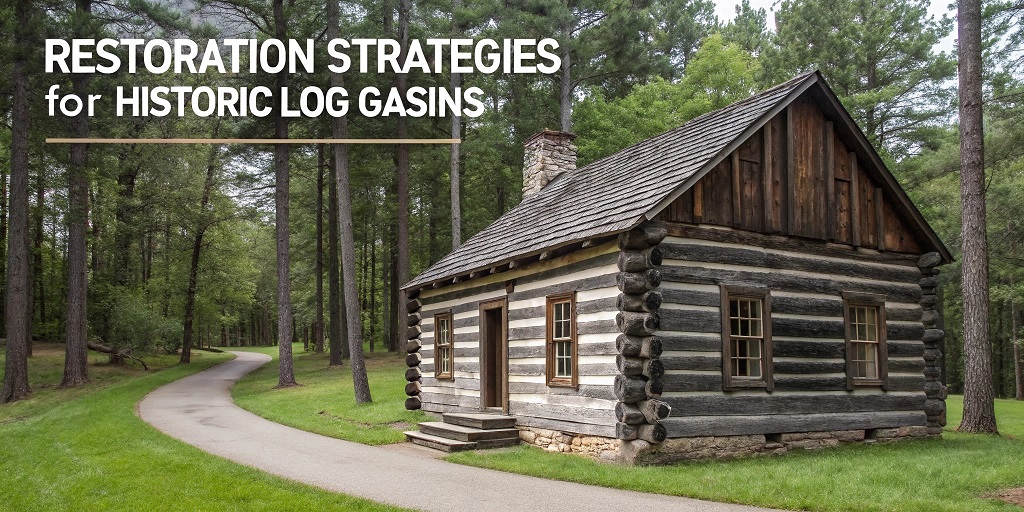
Restoration Strategies for Historic Log Cabins: Best Practices and Modern Approaches
Key Takeaways
- Historic log cabin restoration blends traditional craftsmanship with modern building science for lasting results.
- Careful assessment and the right material choices are essential to preserving the integrity and character of historic structures.
- Upgrades to log cabins can include improved insulation and eco-friendly treatments for greater durability and comfort.
- Collaboration with experienced professionals and reference to preservation standards ensures authenticity and compliance.
- Regular maintenance and community engagement contribute to the ongoing survival of these unique architectural assets.
The Significance of Historic Log Cabin Restoration
Historic log cabin restoration is a cultural stewardship act that preserves past generations’ unique stories, traditions, and construction methods. These buildings, often built with hand tools and native timbers, connect communities to their roots and inspire sustainable design. The process goes beyond structural considerations, aiming to revive the atmosphere and authenticity of the past while ensuring the cabin remains functional for modern use. For those beginning their restoration journey and unsure where to start, it can be invaluable to call a Log Master to discuss strategies tailored to your cabin’s unique needs. Expert input can help you balance a respect for history with the realities of contemporary living requirements. Preserving original materials, when possible, helps maintain the cabin’s historical integrity and adds character that modern replacements can’t replicate. Restoration encourages local craftsmanship and supports traditional building trades that might otherwise fade away. Restoring a historic log cabin is not just about preserving a structure but ensuring its stories endure for generations.
Assessing Log Cabin Condition
Before any restoration can begin, a comprehensive assessment of the cabin’s current state is essential. This initial step forms the blueprint for a successful project. Meticulously inspect every aspect, from corner notches to foundation walls, documenting findings through photographs and notes. Look for telltale signs like soft wood at the base, sagging rooflines, gaps in chinking, or evidence of termites and rodents. Flag any areas with active water leaks or dark stains, as these are often signs of deeper rot lurking within the logs.
Assessing the cabin’s roof is particularly important, as a failing roof can accelerate wood deterioration beneath and lead to costly repairs later. Other considerations include out-of-plumb walls or settling that may have occurred over time. Using reference materials and checklists, such as those provided by the National Park Service, can help ensure nothing is overlooked during this phase. An accurate understanding of current conditions will help you prioritize tasks and budgets realistically, significantly reducing stress and surprises as the project unfolds.
Material Selection for Long-Term Durability
Selecting appropriate materials is critical to achieving a restoration that lasts and respects the cabin’s original character. Ideally, restored cabins maintain continuity by using matching species, grain patterns, and finishes when replacing logs or timbers. Authenticity is essential, but so is practicality. When original materials cannot be sourced, look for alternatives that closely mimic the original’s appearance and weathering qualities.
Modern preservationists have the advantage of improved protective coatings and advanced chinking compounds. These offer superior flexibility, adhesion, and resistance to the elements without sacrificing the building’s ability to “breathe.” It’s equally vital to use vapor-permeable stains or oils rather than impermeable sealants, as these allow moisture trapped inside the log to evaporate safely. This is a common point of failure in less-informed restoration attempts. Advanced materials can help bolster the traditional log building’s impressive durability, offering further protection against mold, insects, and destructive UV radiation.
Balancing Authenticity with Modern Upgrades
A key challenge in restoration lies in meeting contemporary standards for safety, comfort, and energy efficiency, without compromising the look and feel of the original structure. Many historic cabins had little insulation, basic lighting, and no plumbing systems. Today’s owners need to subtly modernize where it counts most, like boosting insulation within the roof or floor and discreetly adding fire suppression systems.
Innovative methods now allow insulation to be installed in ways that are invisible from the outside—for example, by using rigid foam beneath floorboards or installing cellulose insulation behind interior paneling. Historic windows may be fitted with energy-efficient storm panels or re-glazed to improve performance. Roof repairs sometimes include hidden vapor barriers beneath hand-split shakes, preserving the traditional look while offering enhanced weather resistance. When thoughtfully managed, these updates renew comfort and utility while celebrating the building’s historic soul.
Steps for Successful Restoration Projects
A methodical and informed approach is essential to successful log cabin restoration. Here is a streamlined series of steps to guide your process:
- Begin with a consultation. An experienced restoration specialist can identify risks early and provide project-specific advice. Referring to in-depth resources, such as step-by-step restoration guides, ensures no detail is overlooked.
- Secure any needed permits and check whether your property is subject to historic preservation requirements. Local authorities may also have valuable recommendations or incentives for sensitive restoration.
- Develop a project plan outlining scope, budget, timelines, and responsibilities. Prioritize necessities like weatherproofing and structural repair, then address aesthetic and comfort upgrades.
- Source high-quality, compatible materials—often, waiting for the right reclaimed log or hardware can make the difference between a good project and a truly special one.
- Always begin restoration from the top down, ensuring your roof is secure before tackling walls and foundations. This approach prevents new work from being damaged by water infiltration.
- Pay special attention to the details. Restoring original doors, windows, and trim work preserves character and bolsters resale value. Don’t rush this phase—patience pays off in enduring beauty and authenticity.
Examples of Restoration Success Stories
Across the country, once-dilapidated log cabins have been given new life as community centers, private homes, and educational museums. In one notable case, an 1820s log structure on the brink of collapse was rescued by a coalition that included local volunteers, carpenters, and history buffs. They matched materials and techniques by sourcing reclaimed logs from a nearby barn, conserving historical accuracy. The cabin now hosts school groups, serving as a tangible link to pioneer life for local students.
Homeowners often enjoy reimagining cabins as cozy primary residences, studios, or guesthouses. Some have integrated renewable energy systems—solar panels cleverly hidden behind landscaping or geothermal heating that preserves sightlines while boosting comfort. These creative solutions extend the property’s usability and inspire others to pursue preservation as a viable and rewarding endeavor.
Engaging the Community in Cabin Restoration
The power of community in successful cabin restorations cannot be overstated. From barn-raising-style workdays to hands-on workshops led by specialists, involving local people fosters pride and multiplies available resources. Skill-sharing events ensure historic carpentry techniques are not lost, while local fundraising generates crucial financial support. Restoration projects that include educational opportunities—such as demonstrations for students or scout projects—build stewardship and a sense of shared purpose.
Collaborative efforts can also attract grants or local government backing, especially when a cabin’s restoration is tied to tourism or public use. Bringing together volunteers, architects, and craftspeople builds strong relationships and a deeper appreciation for regional identity.
Continuous Care and Future Considerations
Restoration is not a one-time event but marks the beginning of a stewardship commitment. Regular upkeep is vital. Annual inspections help catch small leaks, pest infestations, or shifting logs before they become significant problems. Maintaining gutters, trimming overgrown vegetation, and checking for soil erosion near foundations contribute to the cabin’s health and longevity.
Future advancements in sustainable materials and preservation technology will likely shape how log cabins are restored and maintained. Future-oriented owners will remain informed and ready to adopt new methods that further protect these cherished structures against the challenges of time and weather. With continued attention and creativity, historic log cabins can remain strong, beautiful, and relevant for future generations.


Average Rating